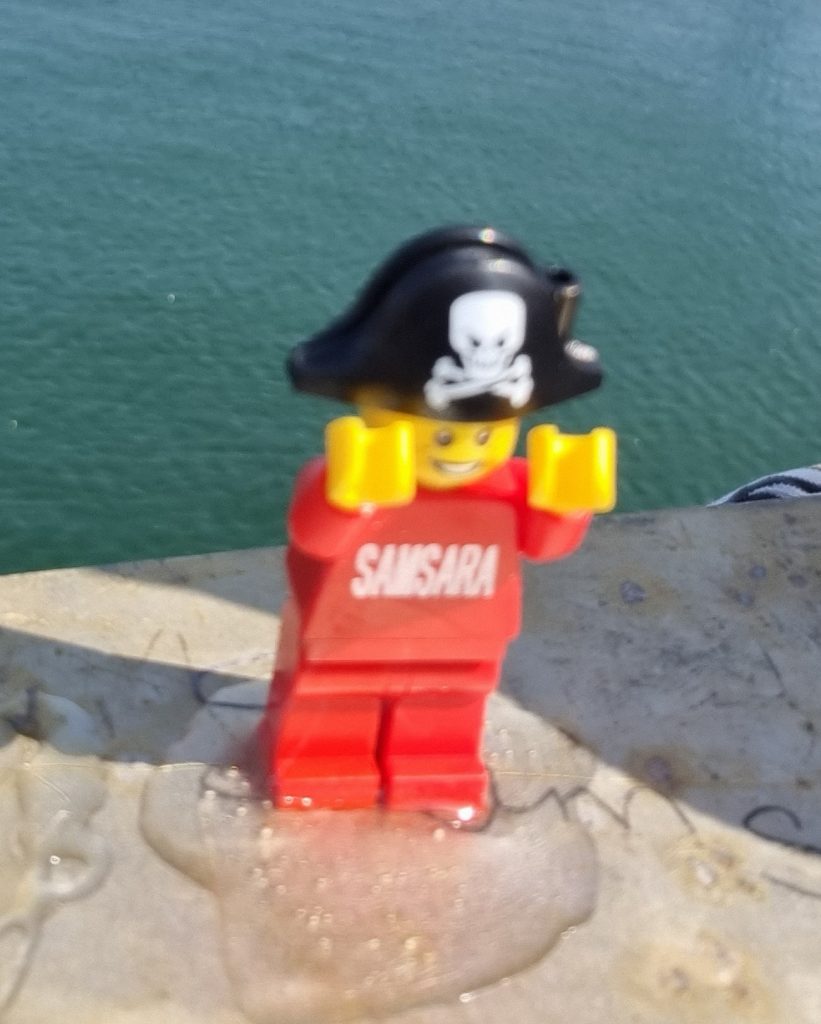The one thing that really frightens me – more than the prospect of hitting the container; worse than having the Orcas take a bit out of my rudder, more pressing than being attacked by pirates – is lightning.
You can avoid Gibraltar and the Red Sea – and as for finding that container some dark night … well, if you’re going to worry about that, you’d better not go offshore at all.
But to be in the middle of an ocean with bolts of lightning cracking and spitting and smacking the sea all around you – is to discover in the most powerful terms just how small and insignificant you really are.
And it scares the living daylights out of me.
Consequently, rather like the obsessive who immerses himself in conspiracy theories, I have been spending hours trawling the internet, trying to find a way of avoiding this.
The research has not been encouraging. For instance, did you know that in Florida, the insurance industry calculates the risk of a sailing boat being struck by lightning is 3.3 in 1,000?
Never mind, I have decided Florida is off-limits too.
Meanwhile, it was time to look into lightning protection devices – particularly those wire brush affairs people stick on the tops of their masts. They cost around £200, and nobody seems to know whether they work – certainly, the manufacturers make no such claims, preferring instead to waffle about the “point discharge principle”.
I did find one company that would fit their gadget “at least two metres” above the highest point of my vessel and then connect it to a web of copper bonded to the bottom – all of which was going to cost more than the boat.
Another search came up with the statistic that I am more likely to be struck by lightning on a golf course. Still, if there is nothing I can do to prevent it, maybe I had better get ready for when it does happen.
Apart from the little matter of blowing out all the seacocks (I bought a large foam plug), the main concern seemed to be melted electrics: Once the batteries and the alternator are gone, it doesn’t much matter what’s happened to the VHF, AIS, GPS and so on.
However, boats today are rattling with portable devices. It seems like boasting, but aboard Samsara, I have two old mobile phones still loaded with Navionics charts, quite apart from the new one with the super camera – and that’s without counting the tablet.
All of which could survive in a Faraday Cage.
You need to know about this. This is wonderful. Apparently, in between inventing electrolysis and electro-magnetism, Michael Faraday discovered that a container made from wire mesh or metal plates will shield its contents from electromagnetic forces.
At the first sign of a thunderstorm, I could put all my portable devices inside a Faraday cage. Then, even if everything else had melted, I would still have rechargeable lights, my hand-held vhf and – most importantly – four devices running Navionics.
OK, so the purists will say I should have paper charts and a sextant. But consider the cost of paper charts for a cruising area that is getting bigger every year. Then there are the tables to stow – and the book on how to work out the sights, since it is nearly forty years since I last had to do it.
Compare that to five portable devices giving my position to three decimal places and enough charts to take me a quarter of the way round the world.
Of course, none of them will be any good once the batteries are flat, so the next item on the emergency list had to be a folding solar panel.
As for the cage itself, traditionally this is the oven but mine has a glass door, so doesn’t count. I looked up “Faraday Cage” on Amazon and discovered that they sell them (of course they do), but it is only big enough for car keys. Apparently up-to-date car thieves scan the electronic codes through your front door and then take the BMW off the drive.
So mine is a steel biscuit tin; big enough for everything – and maybe, even a packet of digestives to go with the cup of tea when all the fuss is over.

Of course, there may be another world war and somebody might shoot down all the GPS satellites, so I have a book called “Emergency Navigation” tucked away behind “Caribbean Pssagemaking”. This is full of advice about floating an iron rod in a bowl of water to find North and how to make a shadow board to measure solar time. I haven’t opened it.
I don’t suppose I’ll ever open it – because, right at the end of all this research – almost as an after-thought, I discovered there is, after all, a proven protection against lightning strikes.
It’s true. No yacht, anywhere in the world, has ever been struck by lightning if she had a Lego man stuck to the top of the mast.
Really, it has never happened. It must be true because I read it on the internet.
Ergo, as Mr Faraday would have said, if I were to stick a Lego man on the top of my mast, I would be on the right side of the statistics.
I went to some trouble over this. Whilst I could find no definitive answer to the question of which figure was best (a fireman, perhaps or a superhero?) I opted for a pirate with the boat’s name on his jumper.
Also, I did make sure he was facing to starboard – that is most important. How foolish would it be to become a statistic because the Lego man was looking the wrong way?


I’ve just read your book – fantastic. I find myself in a similar boat both figuratively and literally although about 8 years behind you. Please forward the info on your supplement.
Thank goodness you found the solution John and thank you for sharing it with us. I’ll install one next time I’m up the mast.
Given your publication, I assume you have arrived somewhere. Well done. Where?;Hope the passage went well.
Thank you. Lovely trip – twin headsails for the second week and only touched the sheets once. Best ever day’s run of 155 miles made good. Real Trade Wind sailing.